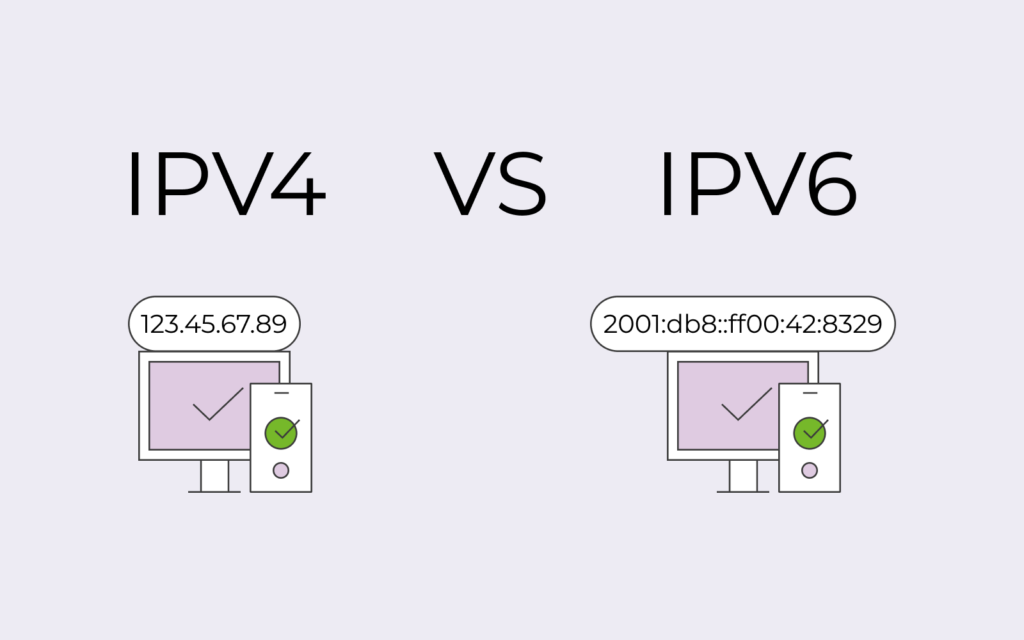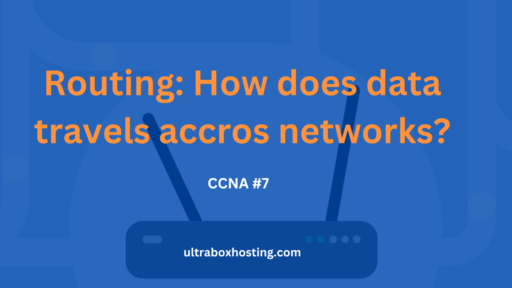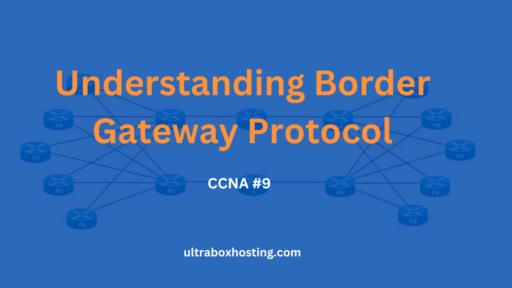In the digital age, IP addressing is a fundamental concept in the realm of networking, essential for the identification and location of devices on both local networks and the Internet. This blog post delves into the intricacies of IP addresses, contrasting the two versions in use today: IPv4 and IPv6. We’ll explore their differences, benefits, and the implications of transitioning from IPv4 to IPv6.
Understanding IP Addressing
An Internet Protocol (IP) address is a unique string of numbers assigned to each device connected to a computer network that uses the Internet Protocol for communication. Its primary purpose is to provide a unique identifier for a network interface and location addressing.

The Basics of IPv4
IPv4 (Internet Protocol version 4) is the fourth version of the Internet Protocol and has been a core protocol of the Internet since its inception. Here’s what you need to know about IPv4:
- Format: IPv4 addresses are 32-bit numbers usually expressed in decimal as four numbers separated by periods (dotted decimal format). Each number ranges from 0 to 255, for example, 192.168.1.1.
- Address Space: IPv4 allows for approximately 4.3 billion unique addresses. While this number may seem large, the explosive growth of the internet and connected devices has led to the exhaustion of IPv4 addresses, prompting the need for a new version.
- Subnetting and CIDR: IPv4 supports subnetting, a method for dividing a network into subnetworks, and Classless Inter-Domain Routing (CIDR), which improves the allocation of IP addresses.
The Evolution and Features of IPv6
IPv6 (Internet Protocol version 6) was developed by the Internet Engineering Task Force (IETF) to deal with the long-anticipated problem of IPv4 address exhaustion. IPv6 is characterized by:
- Format: IPv6 addresses are 128-bit numbers, displayed in hexadecimal, and separated by colons, for example, 2001:0db8:85a3:0000:0000:8a2e:0370:7334.
- Address Space: The transition to 128-bit addresses means an almost limitless number of devices can be directly connected to the internet.
- Enhanced Security: IPv6 was designed with security in mind, incorporating mandatory support for IPsec, which provides confidentiality, authentication, and data integrity.
- Efficient Routing: IPv6 reduces the size of routing tables and makes routing more efficient and hierarchical. IPv6 allows for the aggregation of prefixes of the addresses, which results in more efficient routing.
- No More NAT: Network Address Translation (NAT) is not needed in IPv6 because every device can have a unique public IP address.
Comparing IPv4 and IPv6
IPv4 and IPv6 are both protocols used for sending data over digital networks, but they differ significantly in their capabilities and functionalities. Here, we’ll explore the primary differences between IPv4 and IPv6, highlighting how these variations influence network management and efficiency.
Addressing Capability
- IPv4: IPv4 utilizes a 32-bit address scheme, which allows for about 4.3 billion unique addresses. Although this number seemed ample when the protocol was initially established, the exponential growth of the internet and connected devices quickly exhausted this capacity.
- IPv6: In contrast, IPv6 uses a 128-bit addressing scheme, which drastically increases the number of possible addresses to approximately 3.4×10383.4×1038. This immense expansion ensures that the world will not run out of IP addresses anytime soon, even with the continued growth of internet-connected devices.
Auto-configuration
- IPv4: Configuration of network devices in IPv4 often requires manual intervention or the use of additional protocols like DHCP (Dynamic Host Configuration Protocol) to assign IP addresses automatically.
- IPv6: IPv6 simplifies network configuration through its support for auto-configuration capabilities. Devices can automatically generate their own IP addresses using Neighbor Discovery Protocol (NDP) for link-local addresses, and stateless address autoconfiguration (SLAAC) for global addresses, greatly reducing the need for manual configuration and simplifying network management.
Simplified Packet Header
- IPv4: The IPv4 packet header is more complex and requires various fields that must be checked by routers, which can slow down packet processing.
- IPv6: IPv6 streamlines this with a simplified packet header that omits unnecessary information, which reduces the processing load on routers and improves packet handling efficiency. This simplification leads to faster routing and less overhead in packet processing.
Broadcasting vs. Multicasting
- IPv4: IPv4 uses broadcasting to send traffic to all nodes on a subnet. While effective in smaller settings, broadcasting can lead to network congestion as the number of network nodes increases, due to the simultaneous transmission of broadcasts to all network interfaces.
- IPv6: IPv6 eliminates traditional broadcasting and introduces multicasting, which allows for the efficient transmission of information to multiple designated hosts. By sending packets to a multicast group address, IPv6 reduces unnecessary traffic and network congestion, which is particularly advantageous in large-scale networks.
Transitioning from IPv4 to IPv6
The shift from IPv4 to IPv6 is a significant milestone in the evolution of internet technology, addressing the critical issue of IP address depletion while introducing enhanced network efficiency and security. This transition process is complex and involves several key strategies to ensure both new and old protocols operate effectively during the migration period. Here’s a closer look at these strategies and the ongoing transition efforts.
Dual-Stacking
Dual-stacking is one of the most straightforward methods for transitioning from IPv4 to IPv6. In this approach, network devices are configured to operate with both IPv4 and IPv6 addresses simultaneously. This allows devices on the same network to communicate using either protocol, depending on the destination address’s availability and compatibility. Dual-stacking ensures that there is no disruption in service as it offers flexibility; systems can gradually move to IPv6 while still maintaining connectivity with devices and services that are only compatible with IPv4.
Tunneling IPv6 over IPv4
Tunneling is a method used to transport IPv6 traffic over an existing IPv4 infrastructure. This technique encapsulates IPv6 packets within IPv4 packets, allowing them to travel across IPv4 networks transparently. Common tunneling protocols include:
- 6to4: Automatically assigns an IPv6 address to any host in an IPv4 network, using the IPv4 address embedded within the IPv6 address to facilitate the encapsulation and routing.
- Teredo: A tunneling protocol that gives IPv6 connectivity to nodes located behind IPv4 NAT devices, typically used in small office or residential settings.
- ISATAP (Intra-Site Automatic Tunnel Addressing Protocol): Connects dual-stack nodes over IPv4 networks.
These tunneling solutions enable organizations to start deploying IPv6 without waiting for every part of their network and equipment to be fully IPv6-compliant, facilitating a gradual and controlled transition.
Translation between IPv4 and IPv6
Translation technologies are essential for enabling IPv6-only and IPv4-only devices to communicate with each other. Protocol translation mechanisms include:
- NAT64: A technology that facilitates communications between IPv6 and IPv4 hosts by performing network address translation from IPv6 networks to IPv4 networks.
- DNS64: Works alongside NAT64 by synthesizing IPv6 addresses from IPv4 addresses, allowing IPv6-only clients to access IPv4-only resources.
These translation methods are particularly useful in scenarios where upgrading all equipment to be IPv6 compatible is not feasible or would be too costly.
Conclusion
The evolution from IPv4 to IPv6 is pivotal in the continued growth of the internet. With IPv6, we can connect a myriad of devices directly, enhance security, and improve network efficiency. As we move forward, the adoption of IPv6 will play a crucial role in supporting the next generation of internet technology. Understanding the differences between IPv4 and IPv6 is essential for networking professionals, businesses, and anyone involved in the digital transformation of modern society.




